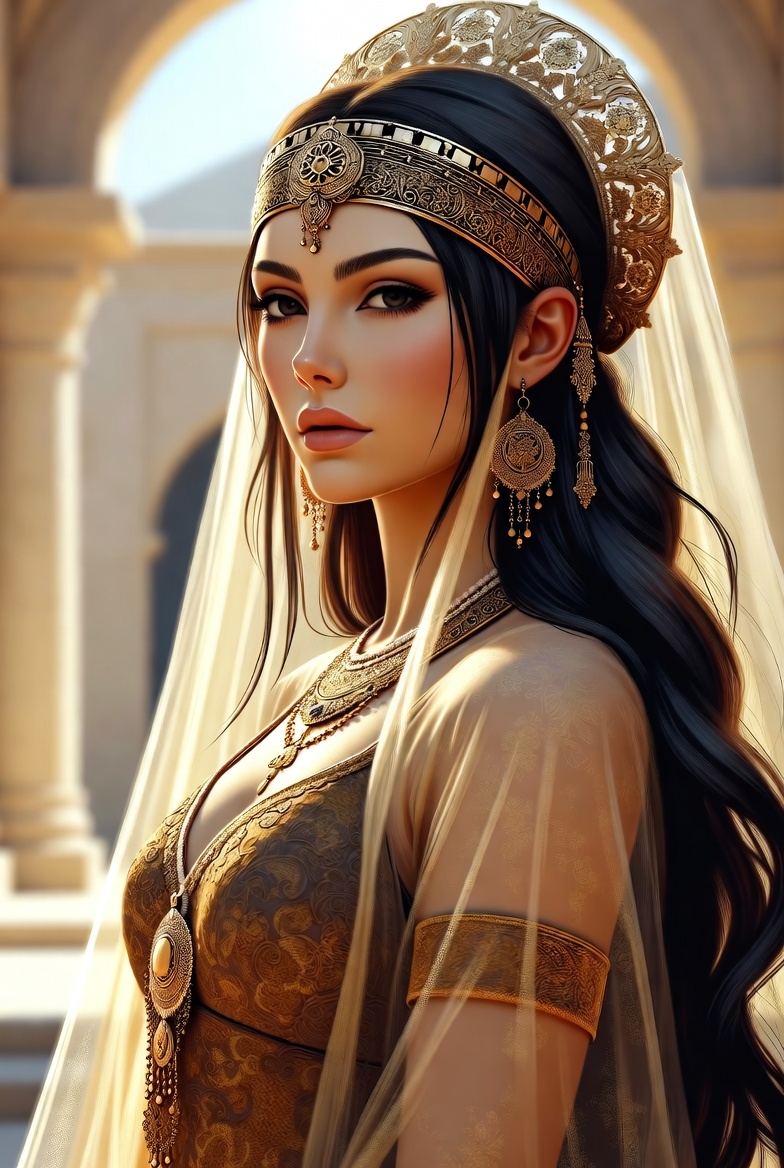By: Shahrdad Khabir
For centuries, the Iranian woman has had a vivid yet often muted presence in the heart of history, culture, and mysticism. She has lived in the shadows, nurtured in silence, composed poetry in secret, and resisted in private. Though often overlooked in official texts and power structures, she has been the backbone of endurance within culture, family, and spirituality.
Woman in Ancient Iranian Culture
Before the imposition of religious structures, women held a revered place in Iranian culture. Anahita, the goddess of water and fertility, symbolized purity and feminine power. In mythology, mothers and daughters played key roles in preserving traditions and passing down wisdom. Woman was not only the nurturer of generations but the guardian of the soul of society.
In classical literature—from Ferdowsi to Hafez—woman appears at times as a celestial beloved, and at others as a symbol of truth and beauty. Yet over time, especially with the rise of patriarchal religious systems, this image was distorted.
Captivity in Superstition and Imposed Teachings
With the advent of political Islam and clerical jurisprudence, Iranian women were pushed out of social and cultural arenas. Sharia-based laws turned women into submissive, restricted, and voiceless beings. Mandatory veiling, job bans, travel restrictions, and legal discrimination all served as tools to silence women.
Among these, the system of sigheh—a so-called “temporary marriage”—has in practice become a means of legitimizing sexual exploitation. Women, instead of being life partners, are temporarily assigned to different men, undermining their human dignity and distorting the meaning of commitment, love, and family. These teachings, rather than protecting women, have commodified them—complete with a religious stamp, a time limit, and a license for use.
Collapse of Family and Commitment
In such a climate, many Iranian women are choosing not to marry—not out of disinterest, but out of awareness. They have realized that the current structures offer neither safety nor respect. Marriage has become an unequal contract rather than a union of souls.
Commitment to a husband becomes meaningless in a culture where men are permitted multiple wives or temporary relationships. Women who seek to live with dignity prefer solitude over humiliation. This choice is not a sign of weakness, but a symbol of strength and honor.
A new generation of Iranian women—educated, aware, and experienced—is redefining the concept of family, not based on jurisprudence, but on humanity. They reject imposed roles and seek relationships built on respect, love, and equality.
Woman and Mysticism: A Hidden Voice in Poetry
The Iranian woman has rediscovered her voice through mysticism and poetry. In Rumi’s verses, she is the symbol of divine love. In Hafez’s ghazals, she is the beloved who unveils truth. In the poetry of Forough, Simin, and Parvin, she is no longer silent—she cries out, protests, and writes.
This feminine mysticism flows not through mosques and pulpits, but through the heart of poetry and music. With the sound of the daf, the melody of the setar, and the tears of the night, the Iranian woman has found a path to liberation. In lullabies, in raising children, and in meaningful glances, she has kept culture alive.
The Woman of Today: Return to Truth
Today, the Iranian woman refuses to be a victim. She is educated, aware, and knows her human dignity is not negotiable. She is neither exploitable nor submissive, neither for sale nor obedient. She is a human being—with the right to choose, to love, and to live with honor.
The liberation of the Iranian woman is only possible through a return to truth—a truth rooted in Iranian culture, in human teachings, and in the words of messengers of love like Jesus Christ. A faith that sees woman as equal to man, not subordinate. A culture that sanctifies love, not one that commodifies it









